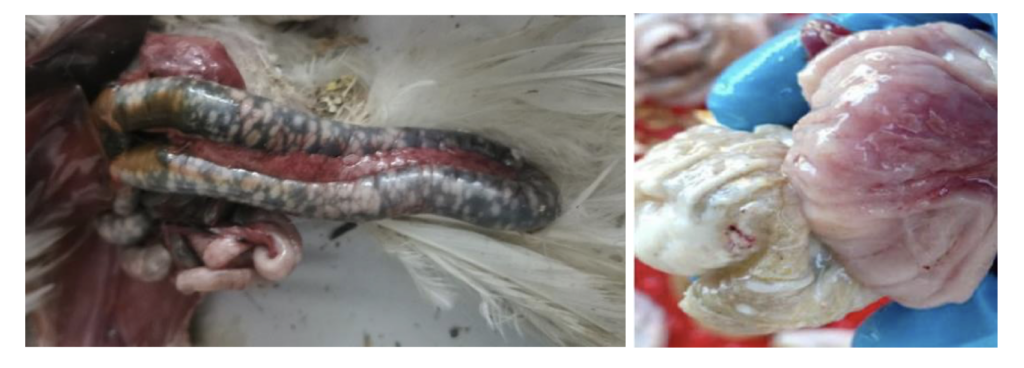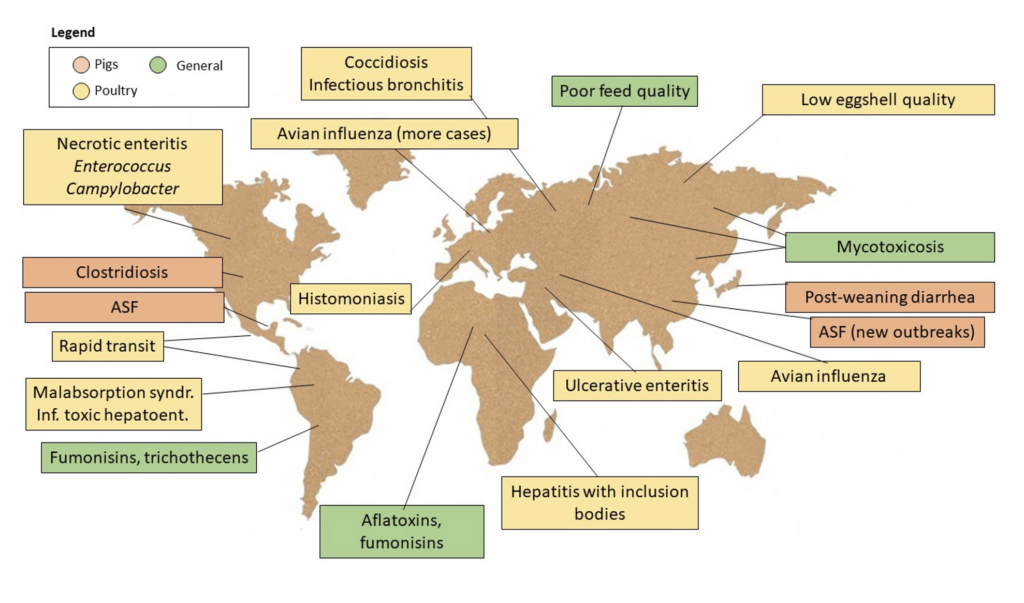
General analysis
Low temperatures persist in the northern hemisphere that favor the growth of fungi in crops, stored raw materials and balanced feed. Monitoring the levels of contamination by fungi and mycotoxins is essential to apply effective prevention techniques and prevent their negative effects. On the other hand, cases of avian influenza spread throughout the countries of the northern hemisphere. Many Asian and European countries reported the presence of this disease, both in poultry and wild birds.
In the southern hemisphere, summer arrives late this year, although temperatures continue to rise and favor the growth of fungi such as Penicillium and Aspergillus, producers of aflatoxins and ochratoxins.
Analysis by geographic areas
In January of 2022, the following issues were described in poultry and pig farms in the different world areas:
· Asia
In Asia, the presence of mycotoxins in feed was high, especially those of the trichothecene group. These mycotoxins damage the intestinal epithelium, which leads to a poor utilization of the nutrients in the diet. Injuries often lead to other problems observed in Asian farms, such as poor eggshell quality in hens due to insufficient mineral absorption, a problem that is also related to high temperatures.
Cases of avian influenza were detected in the Middle East, while outbreaks of African swine fever were declared in countries such as Thailand. Ulcerative enteritis was observed, too, in broiler farms, a disease caused by different species of Clostridium.
Pig farms continue to search for natural solutions to prevent post-weaning diarrhea that do not involve the development of microbial resistances and that are environmentally friendly.
· Russia and Ukraine
Problems in the supply of good-quality raw materials persist, which is why feed has low nutritional value and is highly contaminated with mycotoxins. Many problems derived from poor feed quality arose, such as necrotic enteritis or enteritis by trichothecenes. The price of inputs such as vitamins, amino acids and veterinary products increased as well.
Farms suffer from coccidiosis outbreaks that aggravate the problem of necrotic enteritis, since coccidia are a predisposing factor. Infectious bronchitis outbreaks caused by different variants of the virus were detected, too, making difficult to prevent it through vaccination. Low temperatures have also led to the presence of other respiratory diseases.
· Europe
In turkey farms, histomoniasis caused by Histomonas meleagridis is still a challenge because of the typhlocolitis-related mortality it produces. Outbreaks of highly pathogenic avian influenza are spreading across the eastern part of the continent and are moving West.
· USA
In broilers, problems caused by Enterococcus were detected in US farms, as well as Campylobacter infections.
· Latin America
Rapid transit in broiler chickens was reported in Central America, a problem that leads to low feed utilization and worsening of the litter quality. Mycotoxins are also a problem in Central America, as well as in most Latin American countries that import grain because the imported cereals and legumes are usually of poorer quality and contain high concentrations of fumonisins and trichothecenes. The latter are related to malabsorption syndrome and injuries such as femoral head necrosis.
Grain contaminated with multiple mycotoxins is common, which is dangerous due to the several synergies between different groups of mycotoxins. For example, ochratoxin damages the liver and kidney, which decreases the organism’s detoxifying ability and enhances the toxicity of other mycotoxins.
Infectious toxic hepatoenteritis continues to affect farms in Latin America, causing mortality in chicks during the first week of life and low weight at the end of the production period. Besides, problems caused by Clostridium were diagnosed in both poultry (laying) and pig farms.
Some African swine fever outbreaks are still active in Haiti and the Dominican Republic.
· Africa
Inclusion body hepatitis caused by adenoviruses was diagnosed in poultry farms. Besides, some raw materials have high levels of aflatoxins and fumonisins, mycotoxins that cause hemorrhages in the large muscles (aflatoxins) and neurological signs (fumonisins).
